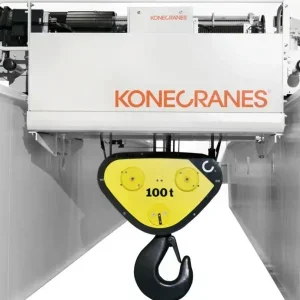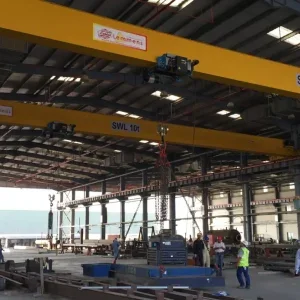The basic steel framework of a rail-mounted electric overhead travelling crane has been put to use in an unusual application on a railway electrification project in the USA.
Working for main contractor Balfour Beatty and a team of designers, Bartholomew Cranes has modified the structure of the crane to create a special switching mechanism for the power lines across lifting and swing bridges. There are several of these along the east coast high-speed railway route.
Balfour Beatty Construction Inc, in joint venture with Mass Electric Construction Co, is electrifying 250km of line between Boston and Newhaven on the way to New York for trains to run at 250km/hour. But the coastal route crosses five low-level lift bridges and swing bridges, across inlets and river mouths in Connecticut. In this holiday area, bridges are up and down all day, opening for passage of yachts and other boats, especially in the summer.
And that is a big problem for Amtrak, the USA’s biggest rail operator, running the service into New York. Boats have priority over trains. It is an even bigger problem for the contractors. Stringing overhead conductor wire is complex enough on long stretches; running it across a bridge that lifts or swings open, without causing a dangerous live 25kV tangle or interfering with train operations, demands innovation.
So Balfour Beatty developed the completely new mechanism, a moving steel frame using Bartholomew’s crane skills and structural engineering by Manhattan firm Han Hadron. The whole frame rolls back to clear the lowered counterweight when the bridge goes up.
The 25kV catenary, from which locomotives pick up power, is carried on the main bridge length as a rigid tube rather than a hanging cable. The main copper wire held in a long rectangular aluminium tube clamp devised by a Swiss firm Furrer & Frey, originally for tunnels. This rigid tube runs right through the bridge and easily lifts upwards with the bridge span.
In the frame section behind the lift span, itself part of a longer multi-span truss bridge, part of this tube is mounted on hinged insulators within the crane frame. These insulators swing inwards towards the railway centre line as the frame moves backwards; this means they clear the fixed section of catenary tube behind.
Guide clamps force the insulators to swing outwards again as the frame rolls back after the bridge is closed, so the tube fills its proper space to form the whole link. Power is maintained across the bridge by an undersea cable cluster when the overhead circuit is broken.
The whole new frame is an additional weight on the bridge and required careful balancing in with the old structure which was originally built at the close of the 19th century. The mechanism is controlled by an electronic system supplied by Pepco and was tested rigorously in the Swiss National Laboratory for Climate Control.






